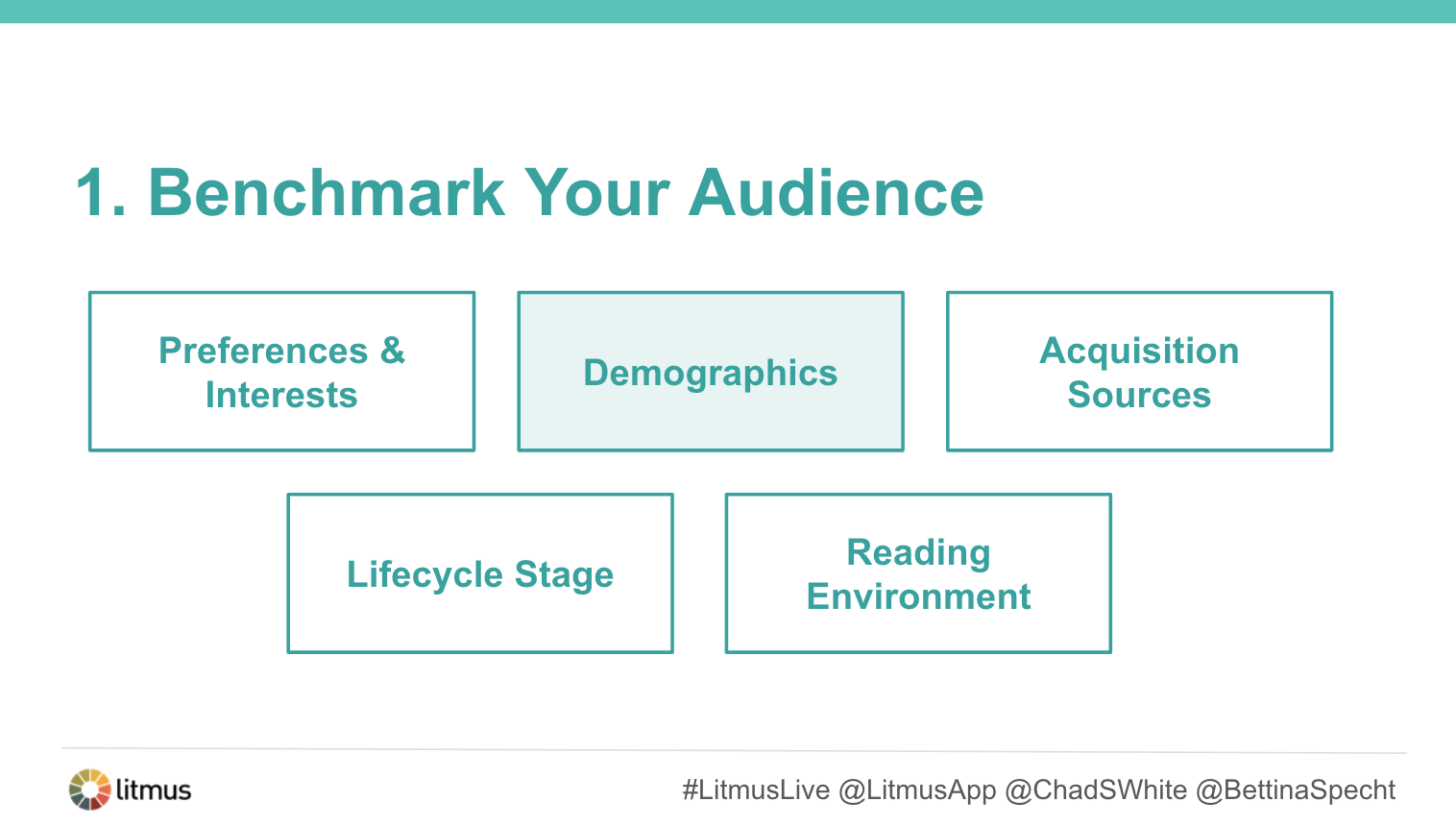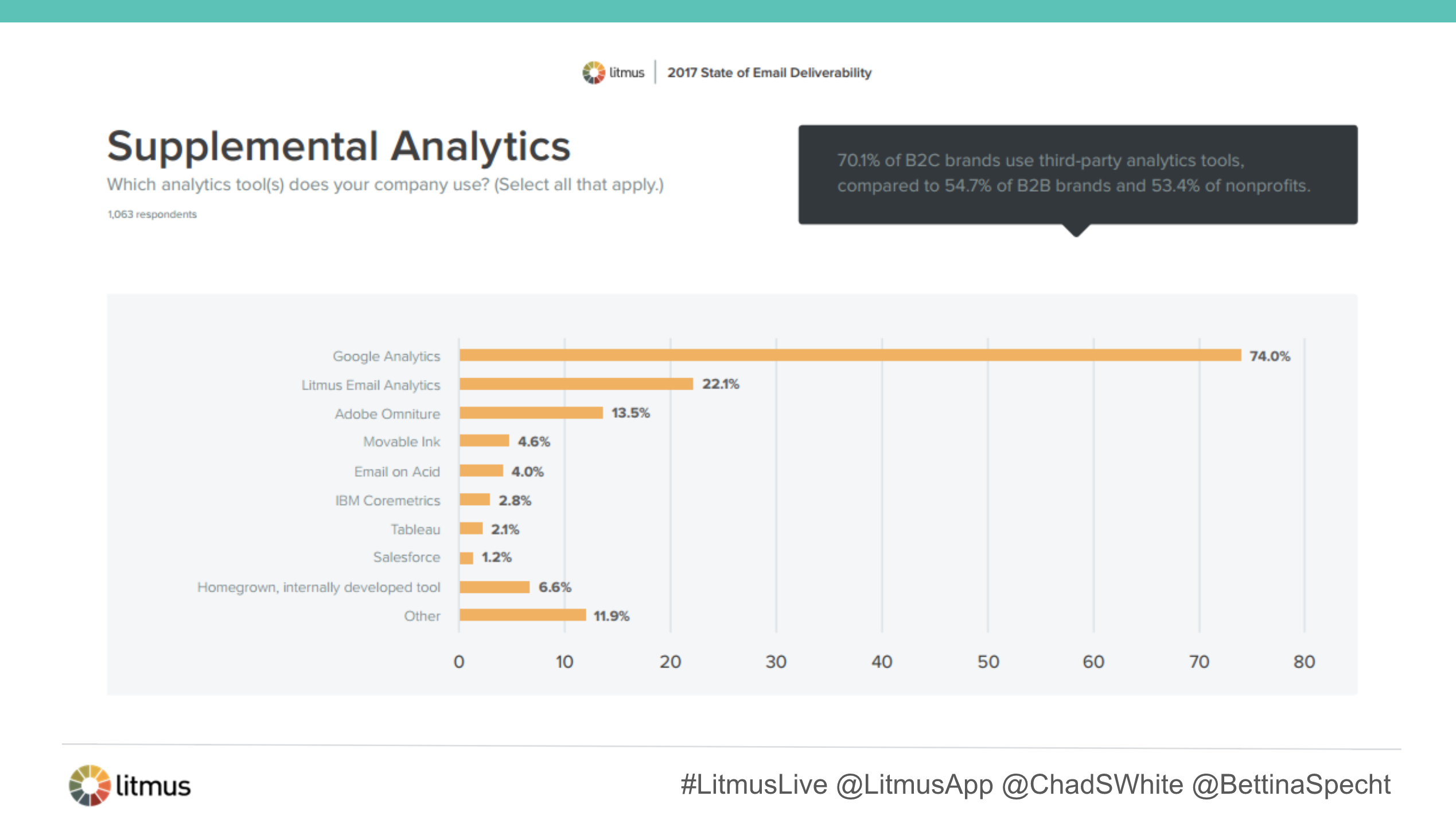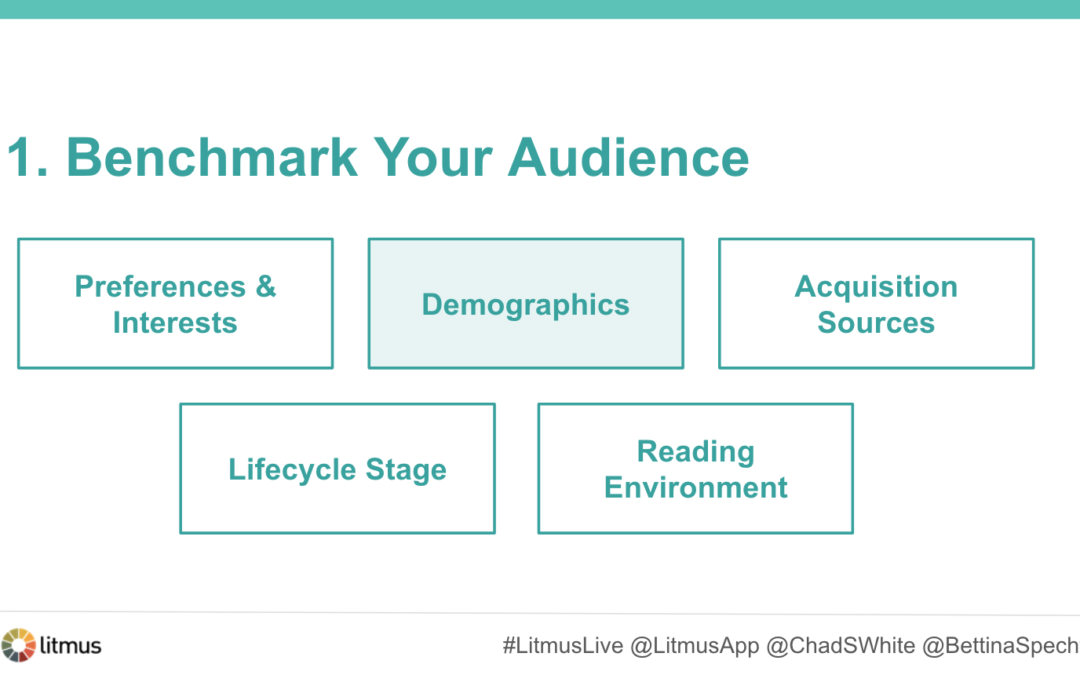As we kick off the New Year, now is the ideal time for marketing teams to consider their email marketing planning for 2018. In an industry that’s constantly shifting as it adapts to consumer, business, and technological changes, setting the priorities for the months to come can be hard!
We’ll help you set the direction for your email marketing kickoff planning with our three-point plan:
- Assessing your email program to truly understand your audience and to capture what worked in 2017—and what didn’t
- Addressing challenges your team is facing
- Seizing opportunities to leverage the industry trends that can truly move the needle for your program
In the 2018 Email Marketing Kickoff webinar, Litmus’ Chad White and Bettina Specht discuss each of those points. Along the way, they share research and advice that will help you set priorities and distribute resources the right way, so your team is set up for email success in 2018.
Watch the recording above, and download the slides and read the Q&A below:
Q&A
We didn’t have time to get to all of the questions during the live webinar, but we’ve answered them here on our blog. Have any additional questions about email marketing kickoff planning? Please leave them in the comments.
How are you defining “successful” vs. “less successful” email programs for the purposes of this presentation? Will you provide a list of these programs for us to follow?
Chad: Rather than force a definition of success onto marketers, in our surveys we ask marketers to tell us whether they consider their email program to be very successful, successful, average, unsuccessful, or very unsuccessful. That’s because success for a retail brand looks very different than success for brand manufacturer, and that looks very different from success for a government entity or for a nonprofit.
Our surveys are anonymous, so we can’t recommend specific email marketing programs to follow based on survey responses. However, we did ask marketers to tell us the brands that they think do email marketing best. Here’s that list of 30+ Must-Subscribe Brands: The Emails that Email Marketers Love Most.
Can you please discuss the 5 blocks regarding benchmarking your audience in more detail?

Chad: Regarding preferences and interests, there are two kinds of preferences:
- Implied preferences that are based on watching what your subscriber does, like browsing certain pages of your website or using your product, and inferring interest from that.
- Expressed preferences that are based on asking subscribers directly about what they’re interested in. That second category includes preference centers and progressive profiling, whether it’s long-term progressive profiling like asking for a birthday date that you can use year after year to trigger a birthday email or short-term progressive profiling like asking about product category interests for this spring or this holiday season, for instance.
Bettina: Demographic information can include factors like gender, age, job title, your subscriber’s industry, and more. One factor we often see being underutilized is information on geolocation. Understanding where your subscribers are based can help you define your content strategy. Plus, it can provide valuable insights to help you decide whether it might be worth to invest in localization, including translations and optimizing your emails for different time zones.
Chad: We have some great research regarding subscriber acquisition sources in our 2017 State of Email Deliverability report. Plus, we have a deep dive on The 5 Most Problematic Subscriber Acquisition Sources.
Bettina: Also consider your subscribers’ stage in the customer lifecycle. Are most of your subscribers active customers or do prospects make up the largest share of your list? How many subscribers have purchased in the past but haven’t bought from you in a while? Understanding what share of your list falls into these different lifecycle stages helps you understand where to set priorities, be it a focus on upsell campaigns or loyalty programs for existing customers, programs to turn prospects into customers, or a win-back series to lapsed customers.
And lastly, understand how your subscribers engage with your emails. Use device usage data—which shows if your audience opens on mobile, desktop, or webmail clients—to help decide whether or not you should invest in optimizing your emails for a mobile audience. Plus, dive even deeper and look into what email clients your audience uses to open your email. Those insights are invaluable if you consider experimenting with more advanced email techniques—like 2018’s hottest email trend, interactive email—that aren’t supported in all email clients.
I’m a one-person email team, do you think it would be productive to have an email brief? It almost feels like extra work for me.
Chad: The more people involved in an email program and the most stakeholders you have, the more valuable an email brief becomes because it keeps everyone aligned on the goal of the email campaign and how it will be executed. However, even for a 1-person email team, we’d recommend creating an email brief for every email. Writing down the goals, timing, and audience for a campaign helps you stay on track, avoid mistakes, and makes it easier to recap past campaigns in case you’re looking to do something similar in future. You might just keep it very short and barebones to stay efficient with your time.
The only time when we’d say that an email brief isn’t helpful is if all the emails you send are mass emails with the same audience, the same goal, and the same kinds of calls-to-action. That said, hopefully your email program mixes up the messaging, goals, and targets specific audiences within your list.
What are some examples of automated emails besides a welcome series?
Chad: In my book, Email Marketing Rules, I break automated emails into four buckets:
- Action-triggered emails, such as order confirmation, event registration confirmation, cart abandonment, and ebook download thank you emails
- Inaction-triggered emails, such as reengagement, win-back, and re-permission emails
- Date-triggered emails, such as birthday, anniversary, event, and appointment emails
- Machine-triggered emails, such as low-battery and motion-detected notification emails
And those are just a few examples. There are tons of possibilities. Marketing automation is one of the most exciting and impactful areas of email marketing.
Can GDPR recipients still get a transactional email?
Bettina: There is very little guidance out there about GDPR and transactional emails. It’s our understanding that you’ll still be able to send transactional emails that are required for your business or service:
For example, email receipts, shipping confirmations, or payment reminders are key for doing business, and you’ll still be allowed to send those kind of messages. Make sure those emails are strictly transactional and don’t contain any promotional content as that would require consent.
Talking about making data-driven decisions, what tools or applications would you suggest to get the best insights into the emails?
Chad: Supplementing your ESP’s analytics is fairly common, especially among B2C brands, according to our 2017 State of Email Deliverability report. The three most common supplemental analytics tools are Google Analytics, Litmus Email Analytics, and Adobe Omniture.

But before choosing additional analytics tools, ask yourself what data you’d like to have that you currently don’t. Where are the gaps? Also, as someone who’s worked at a few large ESPs, I can tell you that a continual frustration there is that clients don’t use a lot of the functionality that they have access to. So I’d first recommend checking to see if there are analytics features in your ESP that you’re not using or didn’t know about.
When your impact on the company is reduced to email, how can we accomplish that consistency and optimization across all the channels? Is there a person that should be monitoring all that? What do you recommend?
Chad: Hopefully your head of marketing cares about creating a consistent customer experiences across channels. At a larger company, you might also have brand guardians who care as well.
Do you have a recommendation for roles and staff size?
Chad: We have some guidance for larger companies in our Staffing for Email Marketing Success executive summary. However, what we’ve found is that company size isn’t the most powerful factor in determining team size. Rather, it’s how important email marketing is to an organization. There are many small companies where email is really important that have teams the same size as much larger companies.
This is an issue that we’ll be diving into much more in the months ahead, so stay tune for new insights on team sizes from our 2018 State of Email Survey.
The post 2018 Email Marketing Kickoff: Webinar Recording + Q&A appeared first on Litmus Software, Inc..


